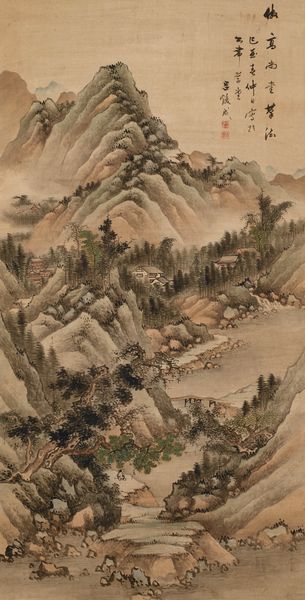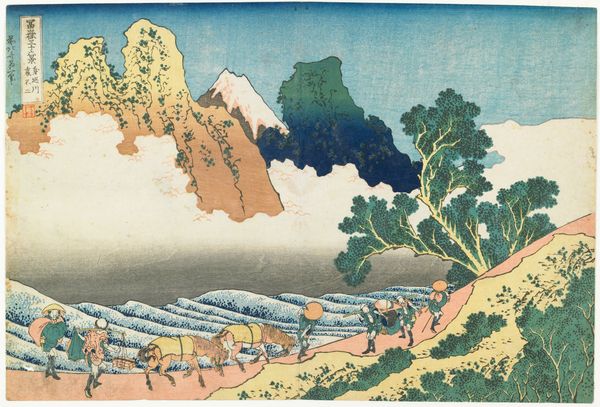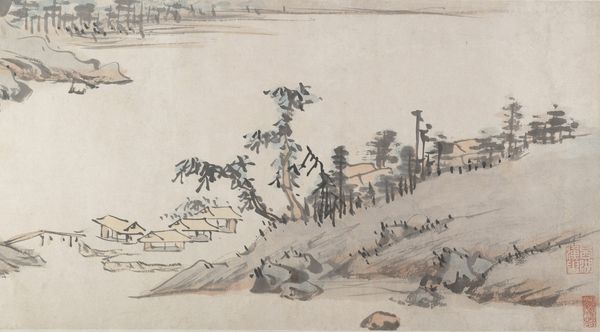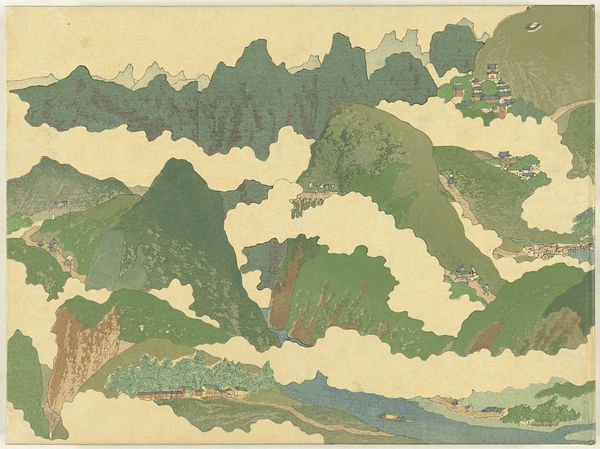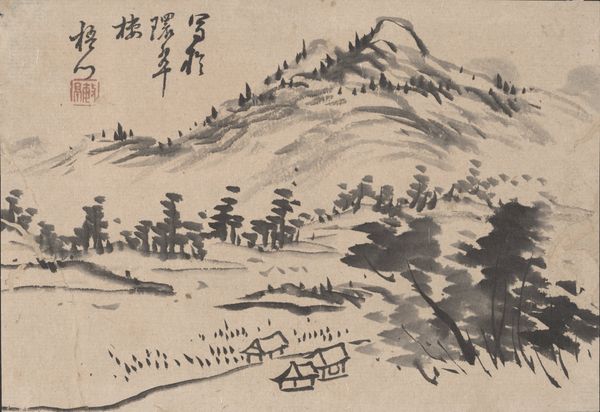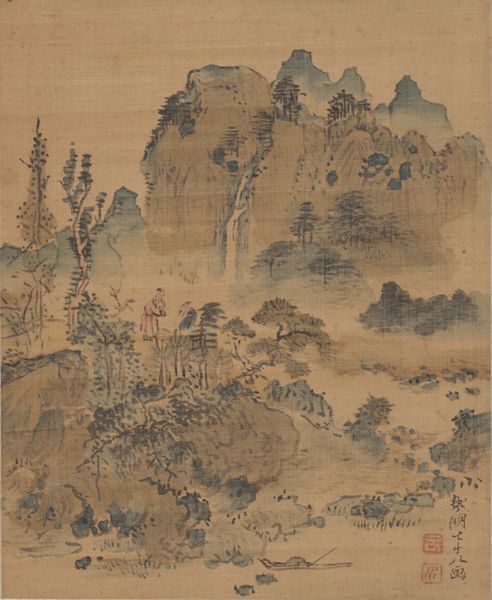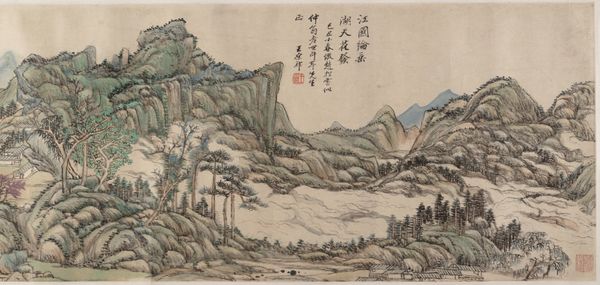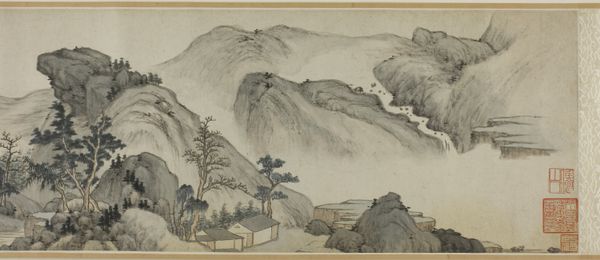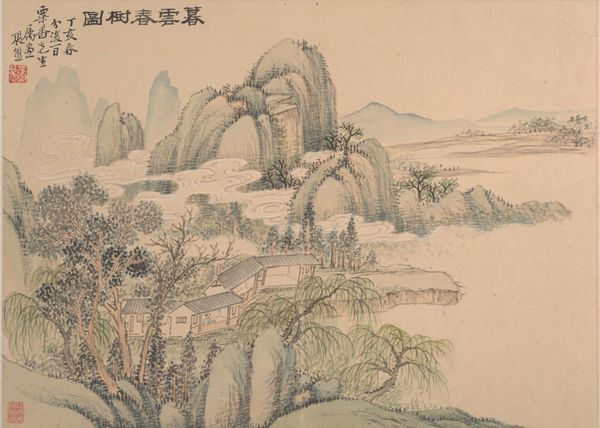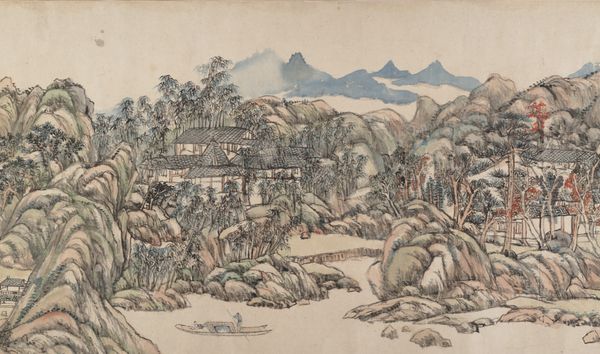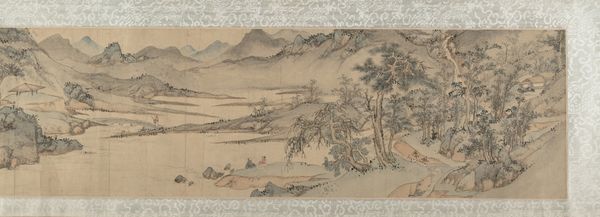
The Kangxi Emperor's Southern Inspection Tour, Scroll Three: Ji'nan to Mount Tai 1698
0:00
0:00
tempera, painting, impasto
#
tempera
#
painting
#
asian-art
#
landscape
#
impasto
Dimensions: Image: 26 3/4 in. x 45 ft. 8 3/4 in. (67.9 x 1393.8 cm)
Copyright: Public Domain
Art Historian: Here we see Scroll Three from "The Kangxi Emperor's Southern Inspection Tour," a tempera painting dating back to 1698. Wang Hui is the artist behind this expansive work. Art Historian: My goodness, it’s breathtaking. It feels both epic in scope and somehow very still, almost dreamlike, with those misty peaks and tiny figures. It’s as if the landscape itself is the protagonist. Art Historian: That sense of scale is intentional. The Kangxi Emperor commissioned these scrolls to document and, let’s be honest, to monumentalize his inspection tours. They were a powerful tool for projecting imperial authority. Art Historian: Absolutely, but it goes beyond just documentation, doesn't it? Mountains in Chinese art often represent the emperor and the stability of the empire. Notice how prominent Mount Tai is; it dominates the composition. It’s a clear symbolic message: Kangxi's reign is as solid and enduring as the mountain itself. Art Historian: Exactly. The sheer number of figures participating in this grand procession through the landscape visually emphasizes the emperor’s mandate and his connection with the people. Think of the logistics involved – not just artistically, but the physical act of moving a retinue of this size across the country. It’s spectacle as governance. Art Historian: And those tiny figures almost seem dwarfed by the landscape, yet they're all moving toward that central mountain. It reinforces this idea of cosmic harmony, of humanity’s role within this ordered world. You also sense that feeling of pilgrimage. Art Historian: Certainly, Mount Tai held significant cultural and religious importance, so the emperor's visit was about far more than inspection; it was a potent ritual act. The painting thus becomes a record not only of the journey, but also a declaration of the Emperor's legitimacy. Art Historian: Looking closely, there's also a quiet beauty to the everyday details—the way the artist has rendered the texture of the rocks and the delicate brushwork in the trees. It provides visual texture to balance that grand narrative. It also makes the divine immanent, by showing gods within that common world. Art Historian: This combination of landscape, ritual, and imperial authority reveals how art could operate as a crucial instrument of statecraft. The scale and artistic execution were intended to create a lasting image of imperial power and benevolence. Art Historian: It’s fascinating to consider how something meant to convey grand power can still evoke such feelings of reverence, contemplation, and harmony in the natural order, centuries later. Art Historian: It reminds us that even the most politically charged images can carry enduring artistic and symbolic power beyond their original intent.
Comments
No comments
Be the first to comment and join the conversation on the ultimate creative platform.


